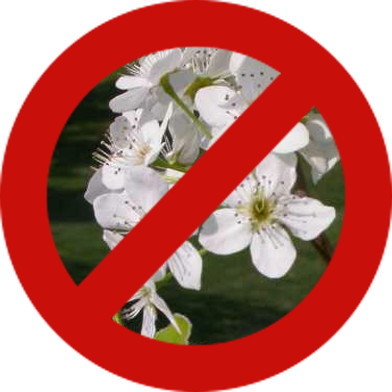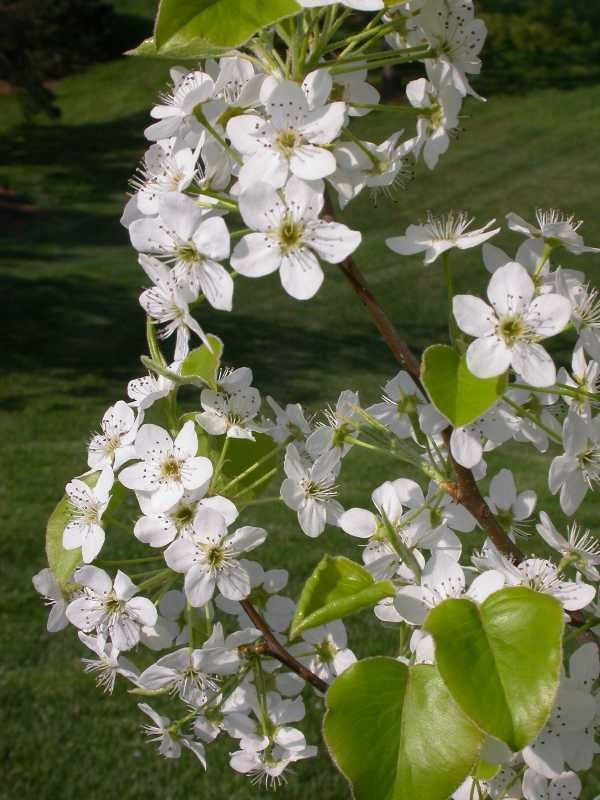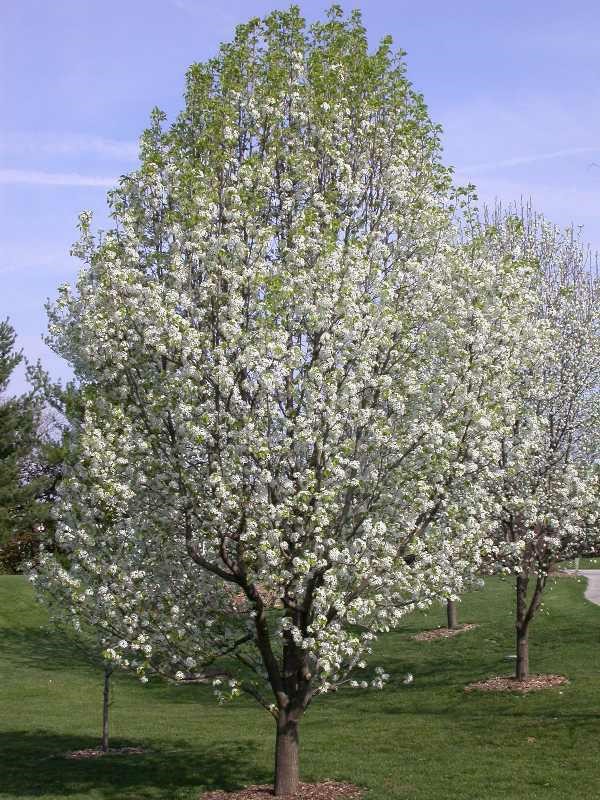 Callery Pear (Pyrus calleryana)
Callery Pear (Pyrus calleryana)
By Jill Maes
Community Conservation Coordinator
EarthWays Center, Missouri Botanical Garden
Callery pear, Pyrus calleryana, takes center stage for the spring installment of Species Spotlight. Callery pear is native to China and Taiwan and it was brought to the United States in 1917. It quickly became a popular landscaping tree. Unfortunately, this tree is now recognized as invasive, and it is not recommended for planting. Callery pears grow quickly, forming dense thickets within several years. Callery pear leaf out earlier than native trees and shade out the spring wildflowers. Like other invasive plants in Missouri, Callery pear outcompetes the native plants, and invades and degrades the natural habitats.
Avoid all Callery pear varieties, including:
Aristocrat
Bradford
Chanticleer
Columbia
Autumn Blaze
Capital
Redspire
 The leaves are heart shaped with rounded teeth and grow to be three inches long in an alternate, simple configuration. The leaves start out glossy-green in the spring and then in the fall they can turn orange, red, pink, or purple. Birds can eat the small greenish-yellow fruit, but they are inedible to humans. Birds will transplant the seed in other areas after eating the fruit and the seeds can remain viable in soil for at least eleven years. Callery pear can also spread locally by suckering from the root system. In April, Callery pear can be seen blooming with small, white flowers that grow in clusters. The smell of the flowers is very rancid, and it has been compared to a dumpster and rotting fish. In a month, you will start to see how badly Callery pear has spread throughout Missouri, along the roadsides, open areas, and disturbed sites. Callery pear trees grow 30–50 feet tall with thorny branches that break easily from snowstorms, ice, and strong winds.
The leaves are heart shaped with rounded teeth and grow to be three inches long in an alternate, simple configuration. The leaves start out glossy-green in the spring and then in the fall they can turn orange, red, pink, or purple. Birds can eat the small greenish-yellow fruit, but they are inedible to humans. Birds will transplant the seed in other areas after eating the fruit and the seeds can remain viable in soil for at least eleven years. Callery pear can also spread locally by suckering from the root system. In April, Callery pear can be seen blooming with small, white flowers that grow in clusters. The smell of the flowers is very rancid, and it has been compared to a dumpster and rotting fish. In a month, you will start to see how badly Callery pear has spread throughout Missouri, along the roadsides, open areas, and disturbed sites. Callery pear trees grow 30–50 feet tall with thorny branches that break easily from snowstorms, ice, and strong winds.
 If you have Pyrus calleryana growing in your yard, there are effective ways to get rid of it. When it is small, it is possible to hand pull or dig it up, but you will need to make sure you get it all or it can easily re-sprout. It can easily regrow from cut stems and stumps, so applying an herbicide to the base, like glyphosate, is recommended to avoid any re-sprouts. It will be necessary to monitor the site for regrowth years after removal. There are plenty of native alternative options to replace Callery pear including American plum, flowering dogwood, Eastern red bud, hawthorn, and serviceberry.
If you have Pyrus calleryana growing in your yard, there are effective ways to get rid of it. When it is small, it is possible to hand pull or dig it up, but you will need to make sure you get it all or it can easily re-sprout. It can easily regrow from cut stems and stumps, so applying an herbicide to the base, like glyphosate, is recommended to avoid any re-sprouts. It will be necessary to monitor the site for regrowth years after removal. There are plenty of native alternative options to replace Callery pear including American plum, flowering dogwood, Eastern red bud, hawthorn, and serviceberry.
If you have a Callery pear to remove, consider participating in the Callery Pear Buyback. By cutting down your Callery pear, you are eligible for one free native tree. The registration is open March 15 until April 15.